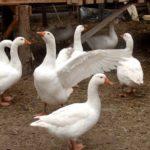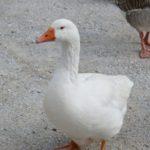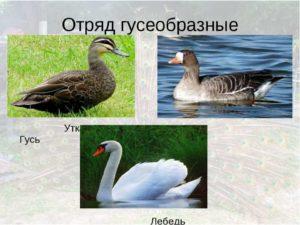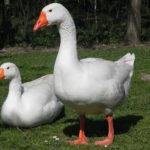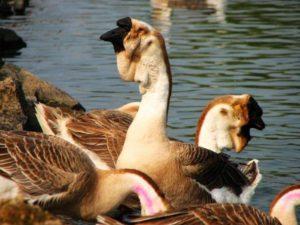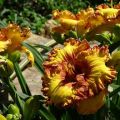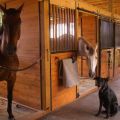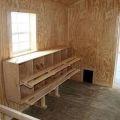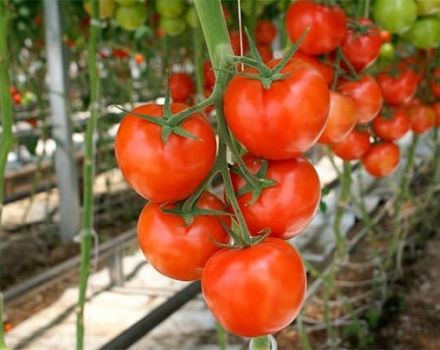Description and characteristics of the governor's breed geese, their feeding and care
The governor's breed of geese is considered relatively new. It was obtained by crossing the Italian and Shchadrinsky breeds at the Makhalov breeding plant. These birds are characterized by high parameters of early maturation, excellent weight indicators, excellent survival. For birds to grow successfully, they need to be properly cared for. Prevention of pathologies is of no small importance.
The appearance and characteristics of the governor's geese
The appearance of these geese is due to the Italian breed. First of all, they are characterized by a white swan color. Moreover, it manifests itself with age. Small goslings are covered with gray dots. At the same time, a distinctive feature of birds is the ability to determine sex at one day of age. Males up to 2 weeks have a dark spot on their back.
The birds owe their name to their important appearance. Moreover, geese are often also called imperial or provincial. The main characteristics of birds include the following:
- dense feathers that help withstand frost;
- small head, slightly elongated;
- proportional physique;
- medium neck sizes;
- no bumps on the forehead;
- strong beak;
- wide chest;
- small limbs;
- orange legs;
- small tail.
The mass of birds aged 9 weeks is 4 kilograms. Even with a small amount of food, geese quickly gain body weight. In this case, the parameters of egg production are individual in nature. On average, a goose produces 46 eggs in 4.5 months.
The main pros and cons of the breed
Disadvantages of this breed were not identified. Some farmers have noted the expense of raising birds. For an increase in 1 kilogram of body weight, 3 kilograms of feed are required. However, the high cost of marbled meat allows you to quickly recoup these costs.
Requirements for maintenance and care
Governor's geese are unpretentious. However, they still need to provide certain conditions. It is important to consider the following rules:
- Provide a dry and warm room. It should be divided into sections. The deck is recommended to be made of straw.
- Place a trough of sand in which the geese can swim. This will help get rid of skin parasites.
- Equip a drinking bowl.It should always be filled with water.
- Provide birds with adequate feed. For 1 kilogram of weight, you should use 3 kilograms of food. It should have enough minerals. In the warm season, the basis of the diet is grass.
- Vaccinate periodically. This will help to avoid many infectious pathologies.
- Provide protection against parasites in time.

Nutrition
In warm weather, it is recommended to release geese to pasture. It is desirable for them to eat sorrel, nettle, dandelion, clover, yarrow, alfalfa. Also, geese are allowed to eat legumes. At the same time, crow's feet and sedge are contraindicated for birds.
In the summertime, birds are recommended to give beets, potatoes, carrots, cereals. In winter, the diet should contain grains, carrots, potatoes, beets. Also birds need additional introduction of minerals.
Daily goslings should be given crushed eggs with grains. Small birds need 6-7 feedings per day. On the second day, you can introduce compound feed into the diet. As the chicks grow, it is worth adding carrots, cereal mixtures, greens. After a month, it is permissible for young birds to be transferred to adult food and released into fresh air, so that they themselves look for food for themselves.
It is important for grown goslings to spend a lot of time in the fresh air, since they require physical activity.
Breeding features
In order for the breeding of birds to be successful, it is important to equip nests for them. They should be placed in every section of the house. There is 1 nest for 2-3 geese. They are 40 centimeters wide, 60 centimeters long, and 20 centimeters high. At the bottom it is recommended to place a litter and cover it with goose down. In order for the reproduction of birds to be successful, the insulation of the room in which the birds live is of no small importance. It is recommended to pay special attention to the protection against drafts.
On the first day of incubation, it is worth ensuring the temperature is at + 37-38 degrees. At the same time, the humidity parameters are 60-70%. It is recommended to use an incubator that has an automatic egg turning function. On the second day, eggs should be cooled twice a day to a temperature of +33 degrees. This is done for a maximum of 20 minutes. On the 5th day, it is recommended to process the eggs with a solution of potassium permanganate.

On day 28, the eggs should be transferred to a special incubator, which is designed for breeding goslings. The temperature inside the device is + 36-37 degrees. In this case, the humidity parameters should be 75%. It is recommended to spray the eggs with water at intervals of 6 hours. Goslings are hatched within 30 days.
Diseases and their treatment
This type of geese has strong immunity. Subject to the rules of care, birds practically do not encounter diseases. Vaccination is recommended for the prevention of bird parasite infestation. Infection usually occurs through food, drinkers, or other birds.
To prevent the development of pathologies, it is worth doing the following:
- treat the room with disinfectants;
- clean the house of feces;
- treat feeders and drinkers with antiseptics;
- get vaccinated on time;
- remove damp bedding.
Governor's geese are highly productive and have strong immunity. Therefore, they are grown by many farmers. To achieve good results in this matter, it is important for birds to provide comprehensive care.
